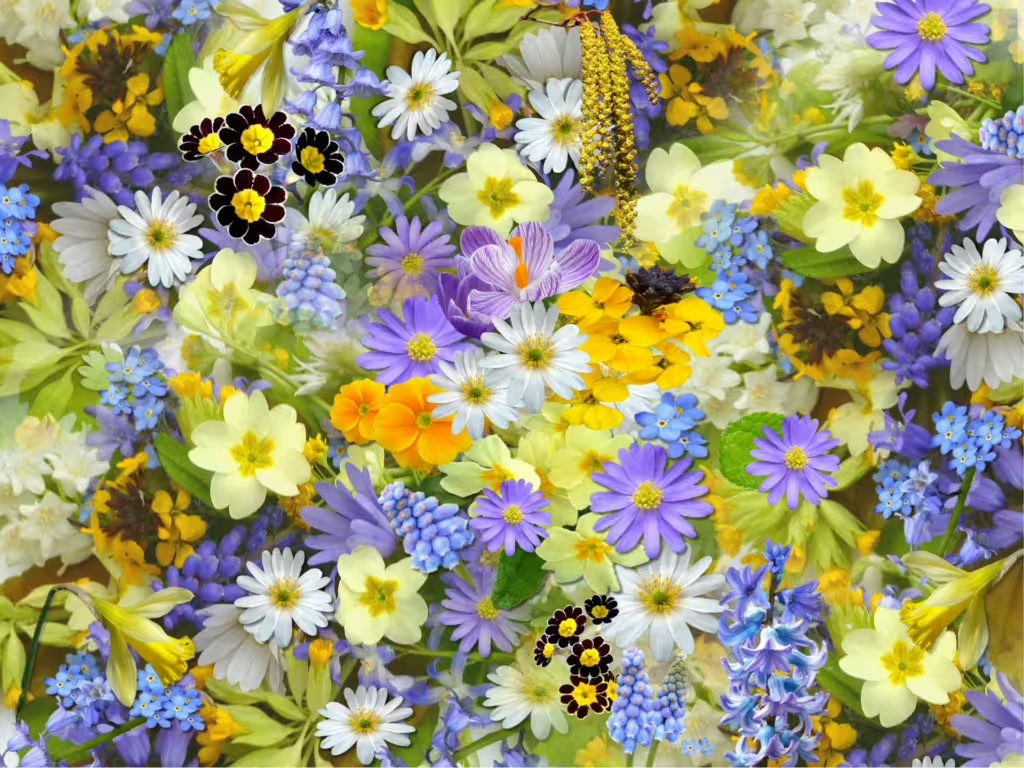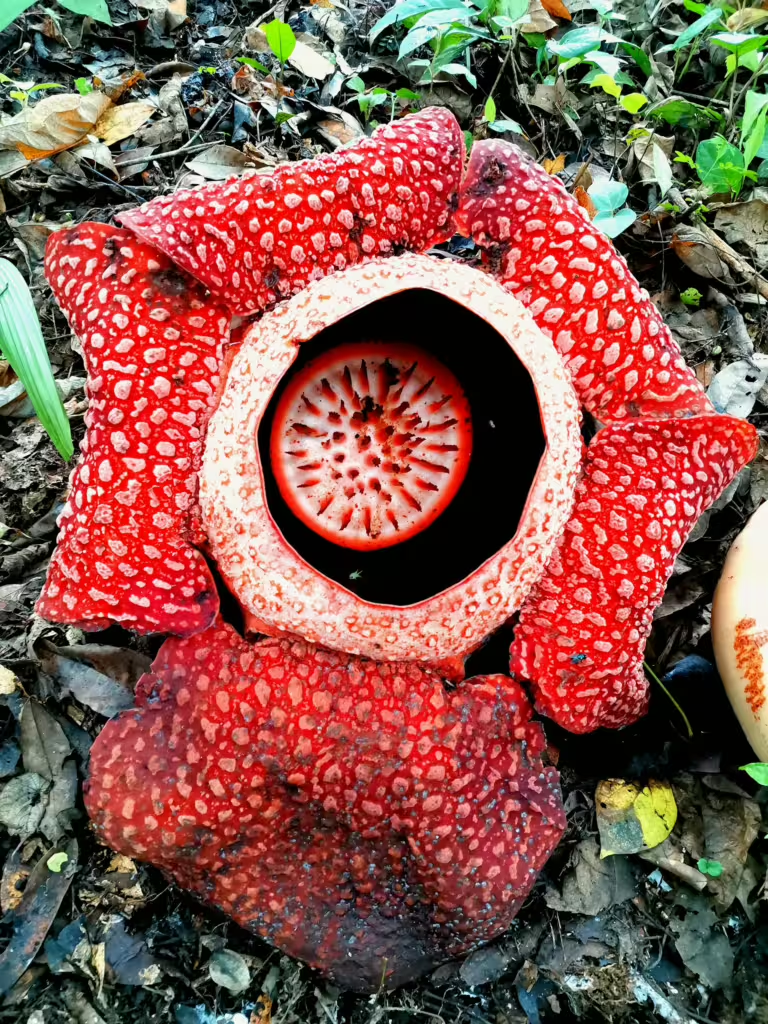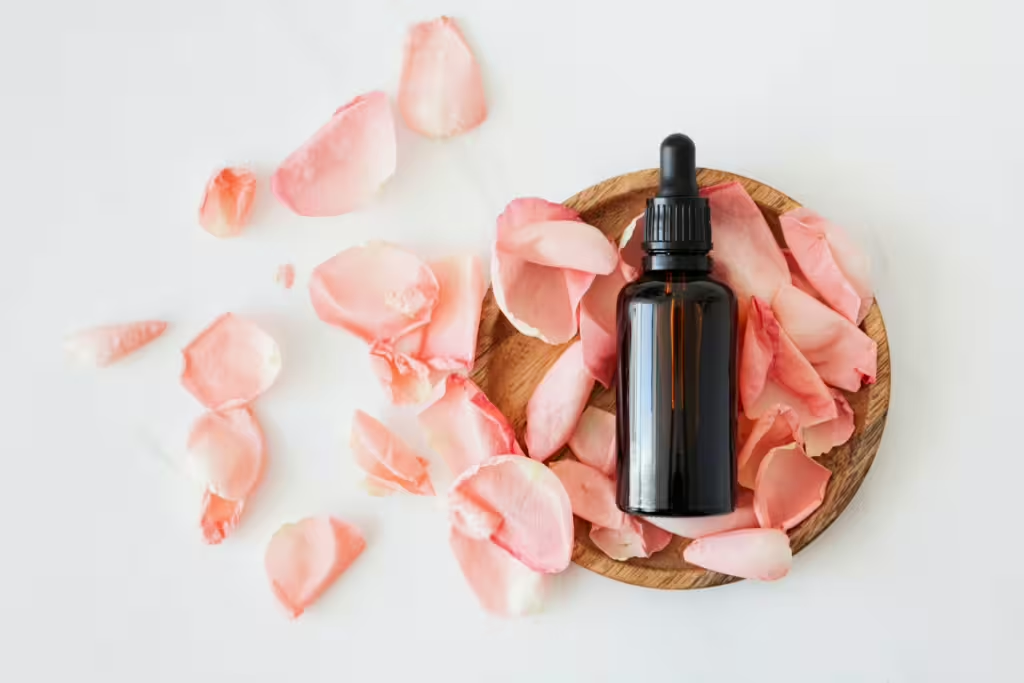There is a quote from William Shakespeare’s Romeo and Juliet that has woven its way into humanity’s collective unconscious over the years. This quote is memorable, not only for its lovely sentiment, but for how true it feels in terms of what it describes. In the play, one of the titular characters says to the other, “a rose by any other name would smell, as sweet.” Most of us who have experienced the fragrant scent of that flower understand the import of its meaning, but few of us truly grasp how importance fragrance is when it comes to plant adaptation.
The natural world is filled with scents that captivate our senses, from the sweet perfume of the aforementioned rose to the pungent, distinctive aroma of wild garlic. The fragrances that plants give off are more than just pleasant or peculiar aromas; they are ecologically important. These scents serve a number of biological functions, helping plants communicate, protect themselves, and attract pollinators. They are the result of millions of years of evolutionary fine-tuning. Many of these chemical signals, produced by volatile organic compounds, can repel herbivores, inhibit microbial growth, or invite pollinators and seed dispersers over for a spell.
Take for instance, the strong fragrance of jasmine. This scent is meant to attract nocturnal moths so that they can pollinate it, while the rotting-flesh scent of the corpse flower draws in other, stranger pollinators like flies and beetles, who are drawn in to feed on the supposed carrion. What’s particularly interesting about plant fragrances is that. even within a single species, scent intensity can vary. These variations are based on environmental conditions, soil composition, and time of day, but they are there and only the most sensitive sniffer can detect them.
Since time immemorial, humans have long been fascinated by the botanical perfumes of plants and flowers. Essential oils, perfumes, incense, culinary herbs, and medicines all owe much of their potency to plant-based aromatic compounds. In fact, many cultures utilize these fragrances within their rituals, religious ceremonies, and traditional healing practices.
The expanded ecological roles of these scents are equally fascinating. Where some plants emit specific odors only when damaged, warning nearby plants of a threat. Others, like mint or thyme, use scent as a passive defense, deterring pests through constant chemical output.
In this article, we will explore some of the most pungent plants on the planet. We will take particular interest in those that possess uniquely identifiable scents, delving into their aromatic qualities, uses by humans, adaptive purposes, and where they can be found.

Lavender (Lavandula angustifolia)
Lavender is probably quite familiar to consumers as it can be found in a number of different lotions, perfumes, baby shampoo, and other such products. It is widely used in aromatherapy, cosmetics, and cleaning products for its calming properties, but it also has a number of antiseptic applications as well. Originally found across the Mediterranean, this hardy shrub has silvery foliage and spikes of distinctive purple flowers. It is in the essential oil that we have managed to distill from its blooms, where its most valuable properties exist.
In an ecological sense, lavender’s distinctive scent is meant to attract bees and other pollinators while keeping pests such as moths and mosquitoes at a distance. The strong aroma that even the most noseblind readers might be able to detect is produced by glandular trichomes on the flower surfaces, which release volatile organic compounds. This dual purpose of attraction and defense enhances the plant’s survival and grants better reproductive success in its native arid habitats.
Eucalyptus (Eucalyptus globulus)
Native to Australia, the eucalyptus tree is nearly as famous as the continent itself. These trees are known for their fresh, menthol-like scent. The leaves contain a high concentration of cineole, a compound that gives eucalyptus its medicinal aroma. When the oils are distilled down, they are used in a number of decongestants, antiseptics, and insect repellents.
The enticing scent of eucalyptus plays a role in deterring herbivores, as the oils are toxic to many animals; but not all of them. Koalas, arboreal marsupials of adorable appearance and sour disposition, have adapted to feed exclusively on eucalyptus leaves. In addition to deterring other animals, the strong odor of the leaves helps reduce fungal and bacterial growth on the foliage itself. Eucalyptus trees are also fairly hardy and thrive in some of the driest regions. Though originally from Australia, they are now cultivated worldwide, especially in areas with similar climates such as California and southern Europe.
Jasmine (Jasminum officinale)
Jasmine is another familiar scent, one that has inspired floral names and delicate perfumes for centuries. This flower emits a rich, sweet fragrance that intensifies at night, which happens to align perfectly with the activity of jasmine’s primary pollinators: moths. Native to Asia, particularly India and China, jasmine grows as a climbing vine with white or yellow flowers. As one might guess, the essential oils that are distilled from the Jasmine flower are prized in perfumes and are often used in traditional medicine as well. Jasmine’s intense scent is a result of aromatic compounds like benzyl acetate and indole.
As we said, environmentally, this plant uses its singular scent to ensure nighttime pollination from local moths, a strategy that boosts reproductive efficiency. This is particularly important in areas with limited daytime pollinator activity, such as the habitats where jasmine is known to grow. Besides gardens and greenhouses the world over, jasmine thrives in warm, temperate climates.

Mint (Mentha spp.)
Many of us are familiar with mint because of its flavor rather than its scent, but it is the combination of those two attributes that make it so iconic. The sharp, cool aroma of mint comes from menthol and other volatile oils. There are several varieties of mint, including peppermint and spearmint, each with their own variations in smell and taste. These plants are originally native to Europe and Asia but are now widespread; as anyone who has tried to get rid of a patch of mint in their backyard garden can attest. This is because mint grows well in moist, temperate zones and can spread aggressively if not properly managed. The oils found in mint are used in culinary dishes, teas, toothpaste, candles, and medicinal balms.
Mint’s strong scent is quite useful in repelling a number of insect herbivores, which gives it an advantage in crowded plant communities. The minty oils that are so sought-after by humans are stored in specialized glandular hairs on the leaves and they release a burst of fragrance only when they are crushed.
Rose (Rosa spp.)
We could not talk about plant fragrances without mentioning roses at least one more time. Roses are basically synonymous with fragrance, though many readers may not realize that not all varieties have a scent. Nevertheless, those that are scented often produce complex floral fragrances with notes of citrus, spice, and honey. Originating in Asia, roses have been bred for both their looks and scents over the centuries and have since become mainstays of gardens and bouquets across the globe.
We love roses for their ornamental and perfumery uses but in nature, their powerful aroma attracts pollinators like bees and beetles. The scent compounds are mainly produced in the petals and vary widely among different species. In addition to their more common uses, rose petals are used to make rosewater and essential oils for culinary and cosmetic applications.
Pine (Pinus spp.)
Pine needles may be a pain for landscaping purposes but they are an amazing scent that conjures images of winter cozyness and freshness. Coniferous trees like the pine are native to the Northern Hemisphere and dominate many forest ecosystems on several continents. Humans have used pine resin for sealing materials, incense, and as a medicinal salve for many generations.
The crisp, resinous smell of pine trees is largely due to terpenes such as pinene in its oils and resins. Those same terpenes, located in the plant’s pine needles and bark, help deter insect pests and fungal infections, contributing to the tree’s longevity. Additionally, the scent actually plays a role in forest communication, signaling stress or attracting beneficial insects.
Curry Leaf (Murraya koenigii)
Curry leaf plants are native to tropical and subtropical regions, specifically in India and Sri Lanka. The plants have a spicy, savory aroma reminiscent of curry powder. This means that curry leaves are sort of a staple in South Asian cooking, as they impart a distinctive flavor to dishes. The distinctive scent of curry leaves also deters herbivores and attracts specific pollinators and beneficial insects. The aromatic compounds, primarily terpenoids and alkaloids, are stored in oil glands on the leaves themselves; hence the name.
Sage (Salvia officinalis)
Sage is one of this writer’s absolute favorite plant scents and frankly, flavors. The leaves of this plant produce a warm, earthy scent due to essential oils like thujone and camphor. Native to the Mediterranean, the plant thrives in rocky soils but does well in herb gardens everywhere. In terms of uses, this herb is commonly used in cooking, medicine, and in traditional medicine such. as smudging rituals. Thus, Sage also plays a significant cultural role in spiritual cleansing practices. The strong scent of sage is also good at warding off pests and inhibits microbial growth on the plant’s surface.
Patchouli (Pogostemon cablin)
Many who have smelled patchouli before might be confusing its musky, earthy scent with something else. This confusion notwithstanding, patchouli is actually quite common and popular in the perfume industry…as well as in counterculture traditions. Originally native to Southeast Asia, this bushy herb is part of the mint family. The oil is extracted from fermented, dried leaves and cultivated in warm, humid environments where it grows best. These include Indonesia, India, and the Philippines. Patchouli’s fragrance acts as an insect repellent and antimicrobial agent. Additionally, its strong smell is often enough to significantly reduce herbivore attacks.
Sweet Alyssum (Lobularia maritima)
Sweet alyssum emits a light, honey-like fragrance that is most often used to attract pollinators, especially bees and hoverflies. Native to the Mediterranean, this low-growing ground cover thrives best in temperate, sandy soils. It is easily recognized by its clusters of tiny white or purple flowers and its strong scent, which is strongest in the morning and early evening. This allows it to align best with times when pollinators are most active. Sweet alyssum’s ability to attract beneficial insects makes it a popular companion plant in gardens.
Ylang-Ylang (Cananga odorata)
Native to tropical Asia, ylang-ylang produces a sweet, exotic scent that is often found in high-end perfumes. The essential oil for these products is often distilled from its yellow, star-shaped flowers. It grows best in humid, tropical regions, most often in the Philippines, Indonesia, and Madagascar. As much as we like the scent, animals love it even more. The fragrance of ylang-ylang is meant to attract night-flying moths for pollination.
Catnip (Nepeta cataria)
Catnip has a minty, herbal scent that drives cats absolutely wild; no pun intended. It grows easily in temperate climates and can even be found in some herb gardens, though it is originally native to Europe and Asia. Catnip contains nepetalactone, a compound that triggers euphoria in felines but that can repel mosquitoes, herbivores, and other pests.

True Investigator Says…
As you can see, whether sweet, musky, sour, or stinky, plant scents play vital roles in nature and can drive us and our insect neighbors to do some pretty incredible things. These plants often shape their respective ecosystems just as much as they do human culture. In many ways, the aromatic adaptations of these plants are essential in helping ecosystems to thrive, via pollination or herbivore deterrents.
For humans, the amazing scents of these iconic plants and flowers evoke memory, mood, and meaning. The calming aroma of lavender, the energizing zing of peppermint, and the warm scent of sage are deeply woven into traditions across the globe—from ancient medicine and religious rituals to modern aromatherapy. As we learn more about the ecological importance of plant fragrances of all kinds, we also deepen our appreciation for the cultural and emotional ways they resonate within us.
Discover more from TrueInvestigator
Subscribe to get the latest posts sent to your email.


